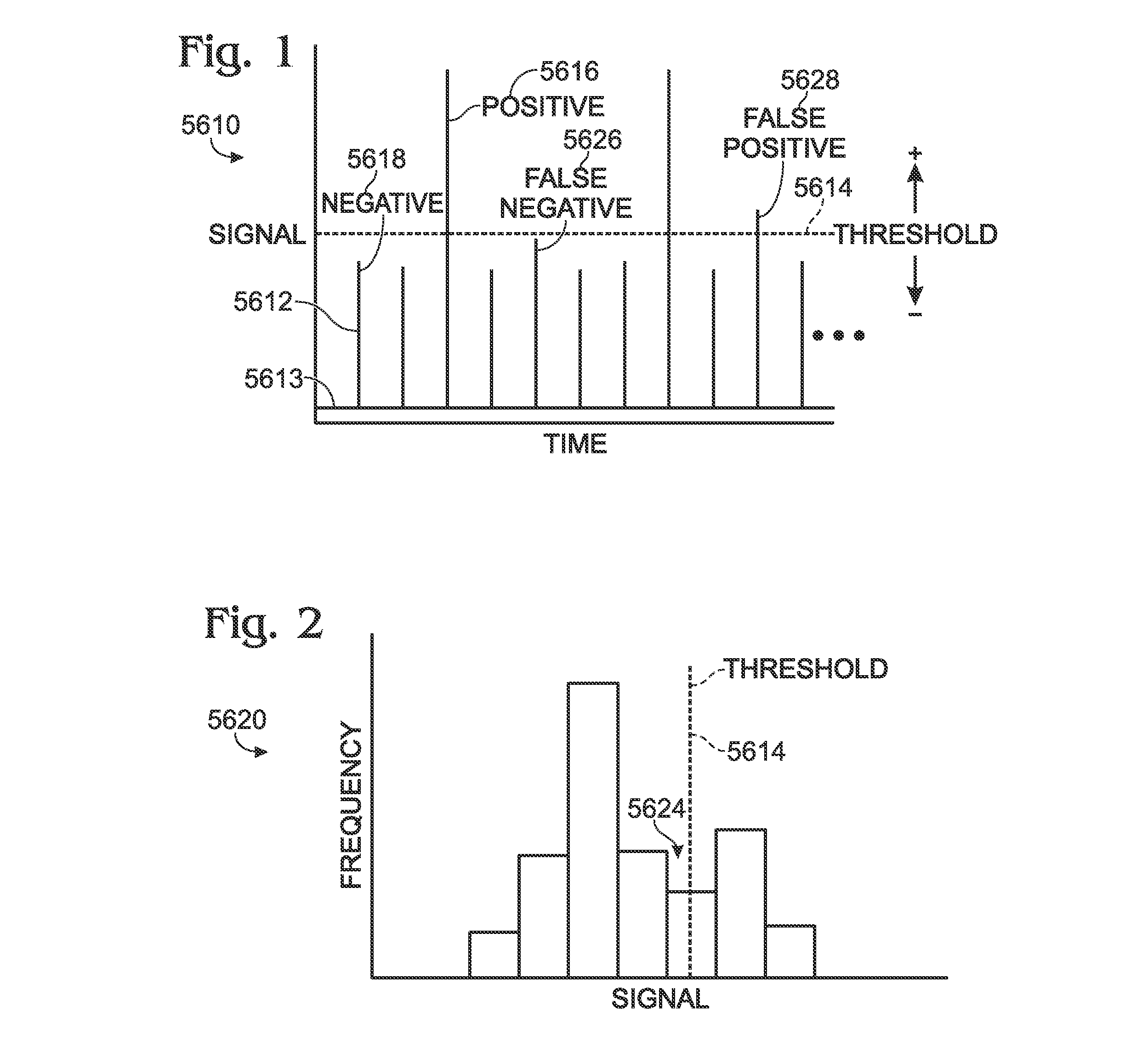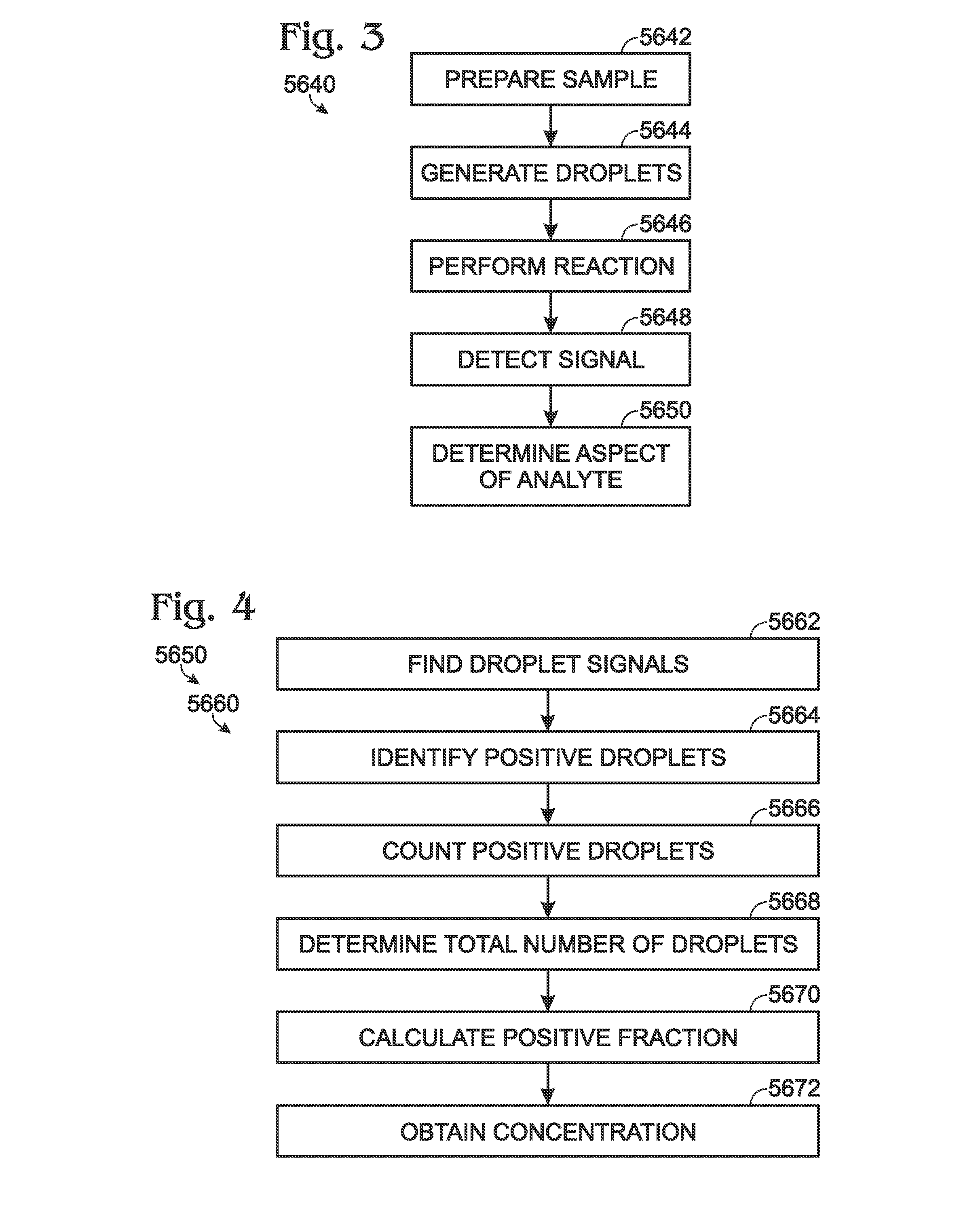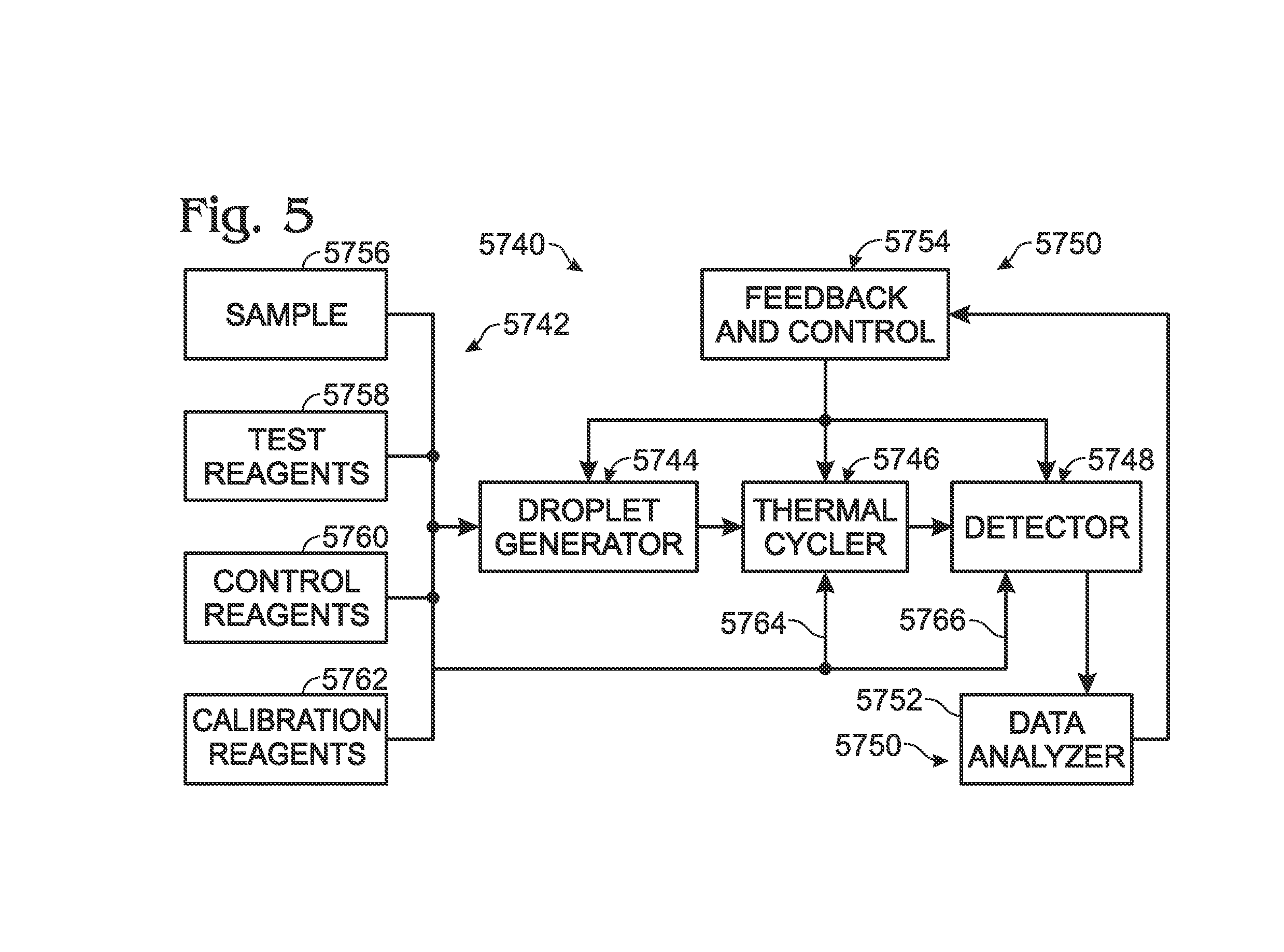Calibrations and controls for droplet-based assays
- Summary
- Abstract
- Description
- Claims
- Application Information
AI Technical Summary
Benefits of technology
Problems solved by technology
Method used
Image
Examples
example 1
Exemplary Identification of Accepted and Rejected Droplets
[0155]This example relates to culling data collected from droplets, as described above for FIG. 22; see FIGS. 23 and 24.
[0156]FIG. 23 shows an exemplary graph 6100 of a signal 6102 that may be measured with respect to time from a fluid stream containing droplets. In other embodiments, here and elsewhere in the present disclosure, the signal may be measured with respect to one or more spatial dimensions instead of time, such as when the signal is collected as an image of droplets. The signal may, for example, be generated by a fluorescence signal from an assay reporter (e.g., a probe) that reflects occurrence of a reaction, such as amplification of a nucleic acid target and / or other analyte.
[0157]Signal 6102 varies in strength over time as each droplet travels through a detection region where the signal is detected. In particular, the signal from each droplet (i.e., the “droplet signal”) generates a wave or peak 6104 as the in...
example 2
Exemplary Approaches to Determining Total Droplet Number
[0164]Signal peaks detected from negative droplets may be small and difficult to identify reliably. For example, an assay reporter with a low background (e.g., a fluorescent probe, such as a Taqman® probe) may produce a very weak signal (e.g., a strongly quenched signal) in the absence of reaction. Accordingly, counting the total number of peaks, and thus the total number of droplets analyzed, may not be practical with some assay reporters. This example describes exemplary approaches for determining the total number of droplets in an assay; see FIGS. 25-27.
[0165]FIG. 25 shows a graph 6150 of an exemplary signal 6152 that may be measured with respect to time from a fluid stream containing droplets. The signal may be produced by a reporter that is used to distinguish the presence or absence of at least one analyte or target molecule in individual droplets. A total of twelve equally spaced droplets produce signal 6152 presented in...
example 3
Selected Embodiments
[0176]This example describes selected embodiments of the present disclosure related to methods of using controls and calibrations for droplet-based assays, in accordance with aspects of the present disclosure, presented without limitation as a series of numbered paragraphs.
[0177]1. A method of performing a droplet-based assay, comprising: (A) detecting a first signal and a second signal from a plurality of droplets; (B) identifying accepted droplets of the plurality for which the first signal meets a predefined condition and rejected droplets of the plurality for which the first signal does not meet the predefined condition; and (C) determining a concentration of a target in the accepted droplets based on the second signal from the accepted droplets, and without any contribution of the second signal from the rejected droplets.
[0178]2. The method of paragraph 1, further comprising a step of amplifying the target in one or more of the plurality of droplets before t...
PUM
| Property | Measurement | Unit |
|---|---|---|
| Fraction | aaaaa | aaaaa |
| Concentration | aaaaa | aaaaa |
| Size | aaaaa | aaaaa |
Abstract
Description
Claims
Application Information
 Login to View More
Login to View More - R&D
- Intellectual Property
- Life Sciences
- Materials
- Tech Scout
- Unparalleled Data Quality
- Higher Quality Content
- 60% Fewer Hallucinations
Browse by: Latest US Patents, China's latest patents, Technical Efficacy Thesaurus, Application Domain, Technology Topic, Popular Technical Reports.
© 2025 PatSnap. All rights reserved.Legal|Privacy policy|Modern Slavery Act Transparency Statement|Sitemap|About US| Contact US: help@patsnap.com



